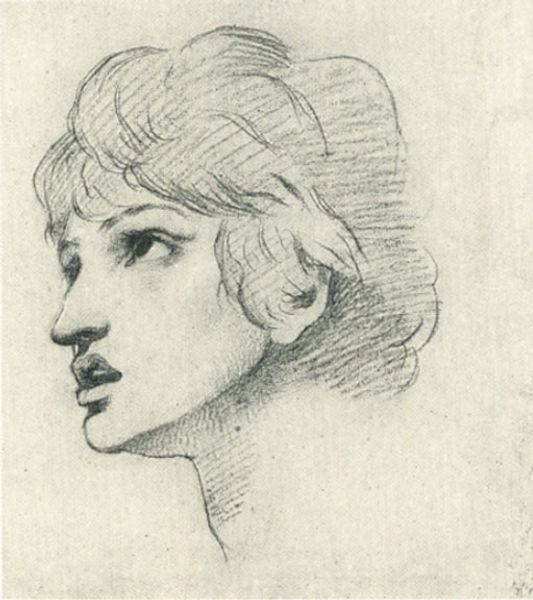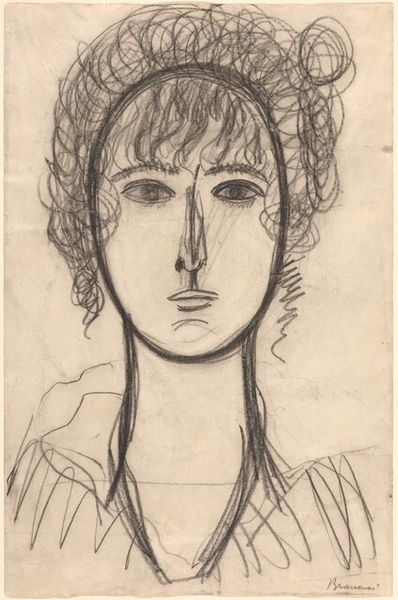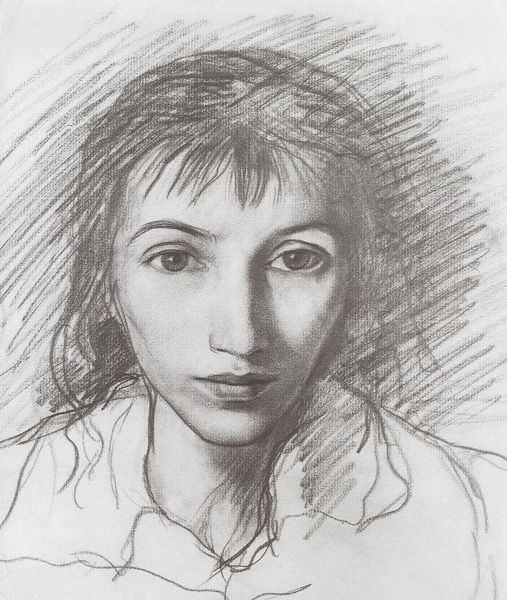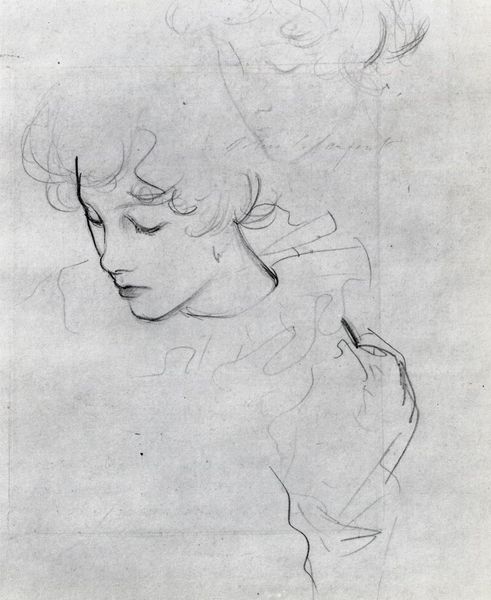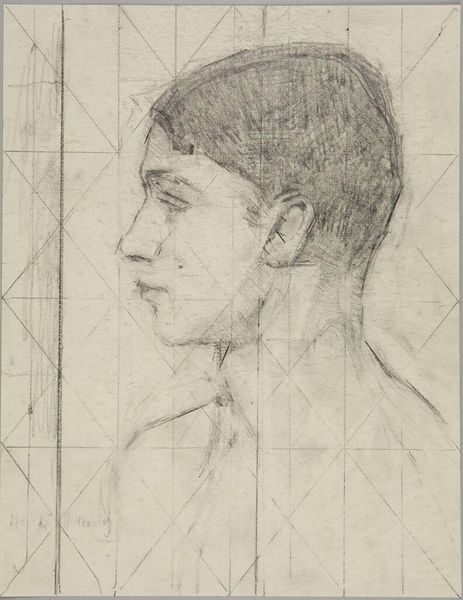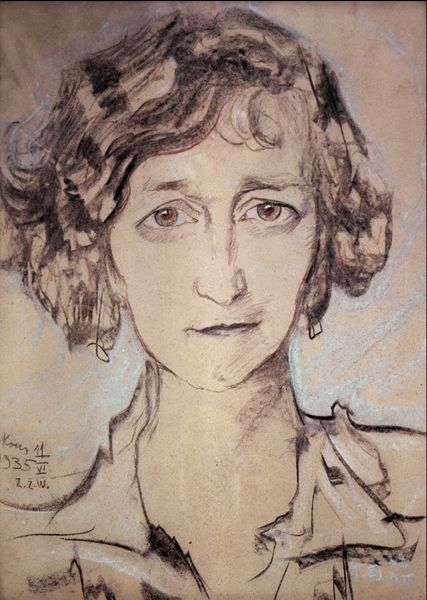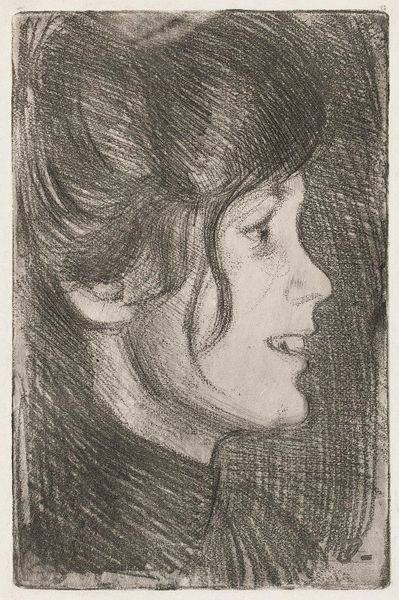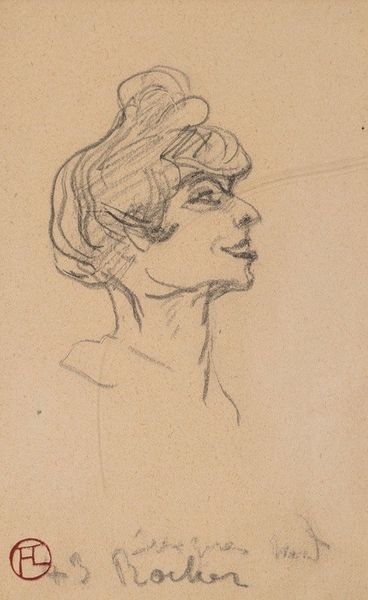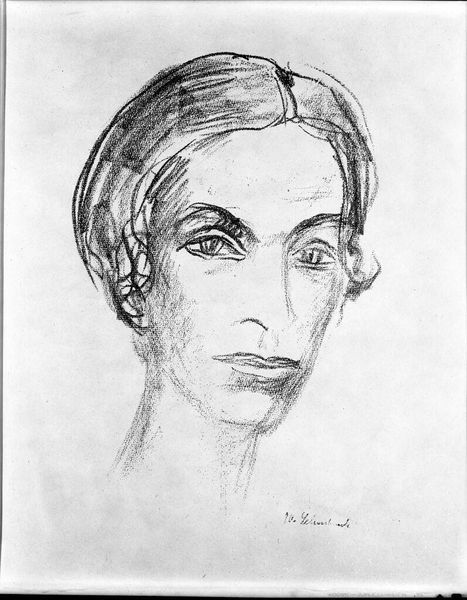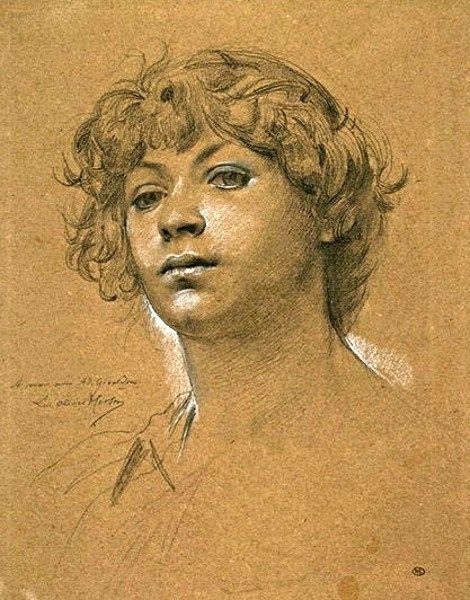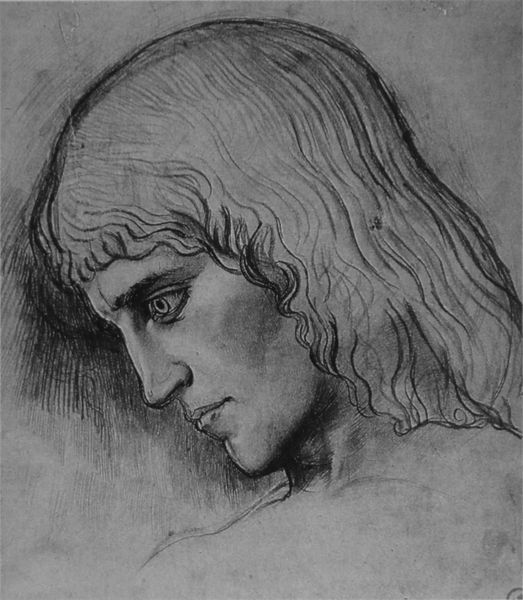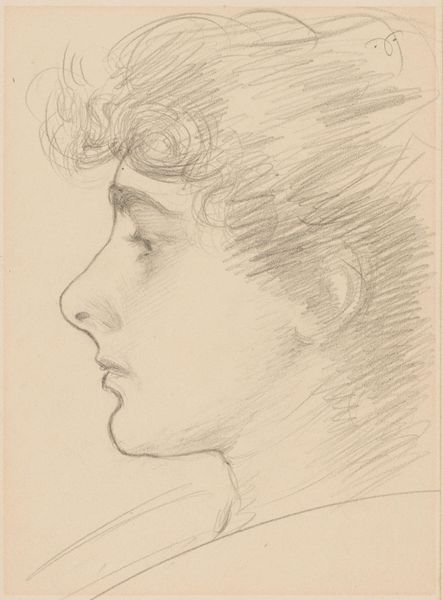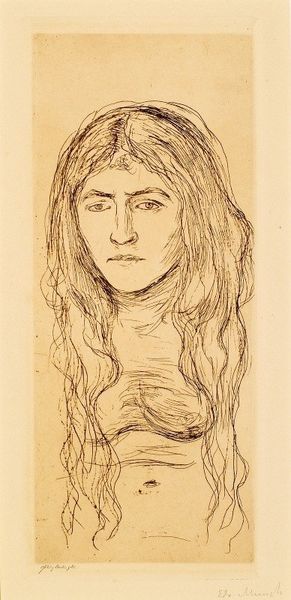
Copyright: Public domain
Curator: What captures me immediately about this pencil drawing is its air of elegant melancholy. Editor: Ah yes, let's contextualize that feeling. We're looking at Léon Bakst's "Portrait of the Marchesa Casati," from 1912. And Luisa Casati, the subject, was no ordinary muse; she cultivated an image of eccentric theatricality. Curator: You know, "theatricality" is spot on. It's like she's *performing* her own self, with those huge eyes practically leaping off the page! I love how Bakst captured that almost desperate need to be seen, to be *remembered*. Editor: Absolutely, the eyes are a gateway. Notice the subtle dark circles underneath, amplified perhaps. Casati consciously fashioned herself into a living work of art; her eyes and makeup were central to her constructed persona. It’s almost as though the artist has peeled back a layer, exposing the fragility beneath. Curator: Peeling back… I like that. There’s also something wonderfully modern about how unfinished it feels. A sketch rather than a finished "portrait." It’s like a stolen moment. Like you caught her between performances. Editor: It certainly resists idealization, doesn't it? Bakst seems less concerned with flawless representation and more with conveying the energy, the…spirit, if you will, of Casati's singular presence. Consider how much visual information is distilled into minimal strokes! Curator: You can sense the hand of the artist; that lends an intimacy, don't you think? You almost feel as though you're there in the room with Bakst and Casati. I would love to have been a fly on *that* wall. Imagine! Editor: Oh, without question! Casati cultivated an almost mythical reputation through careful use of classical and often obscure symbology. The intense gaze for instance recalls ancient Roman portraiture--a calculated immortality. Curator: I think both Bakst and Casati would approve of us dissecting their work so meticulously! She, the ultimate exhibitionist, and he, a master craftsman unveiling hidden selves. Editor: Indeed. Looking closely helps unlock some of the historical and psychological density—a portrait not merely of a woman, but of an era. Curator: Exactly. So next time you find yourself trying on a persona or two, maybe spare a thought for the Marchesa and her commitment to art, to performance, to *being*.
Comments
No comments
Be the first to comment and join the conversation on the ultimate creative platform.
